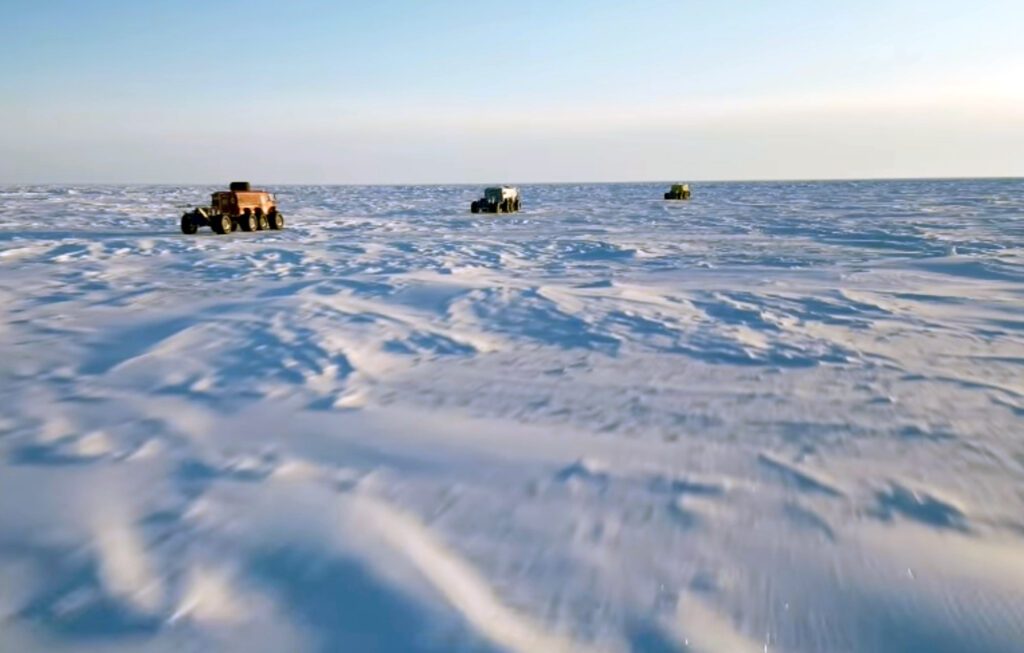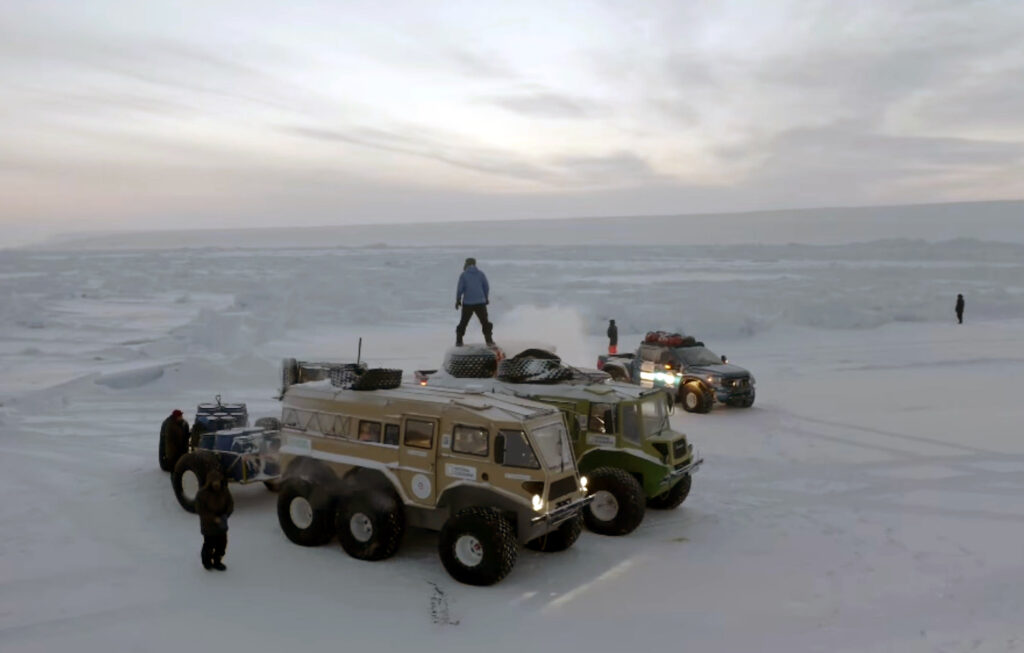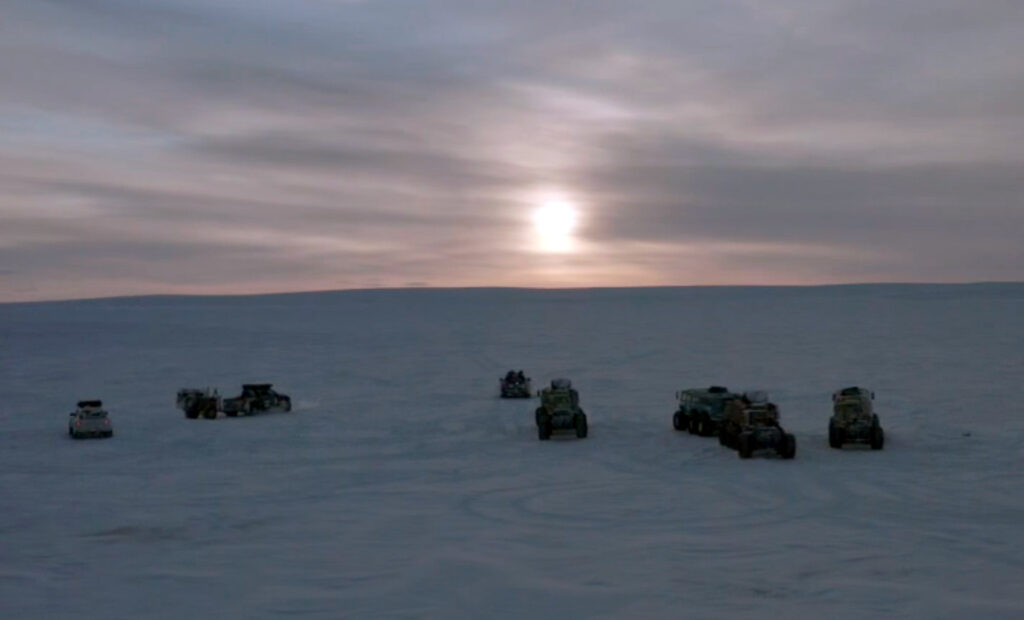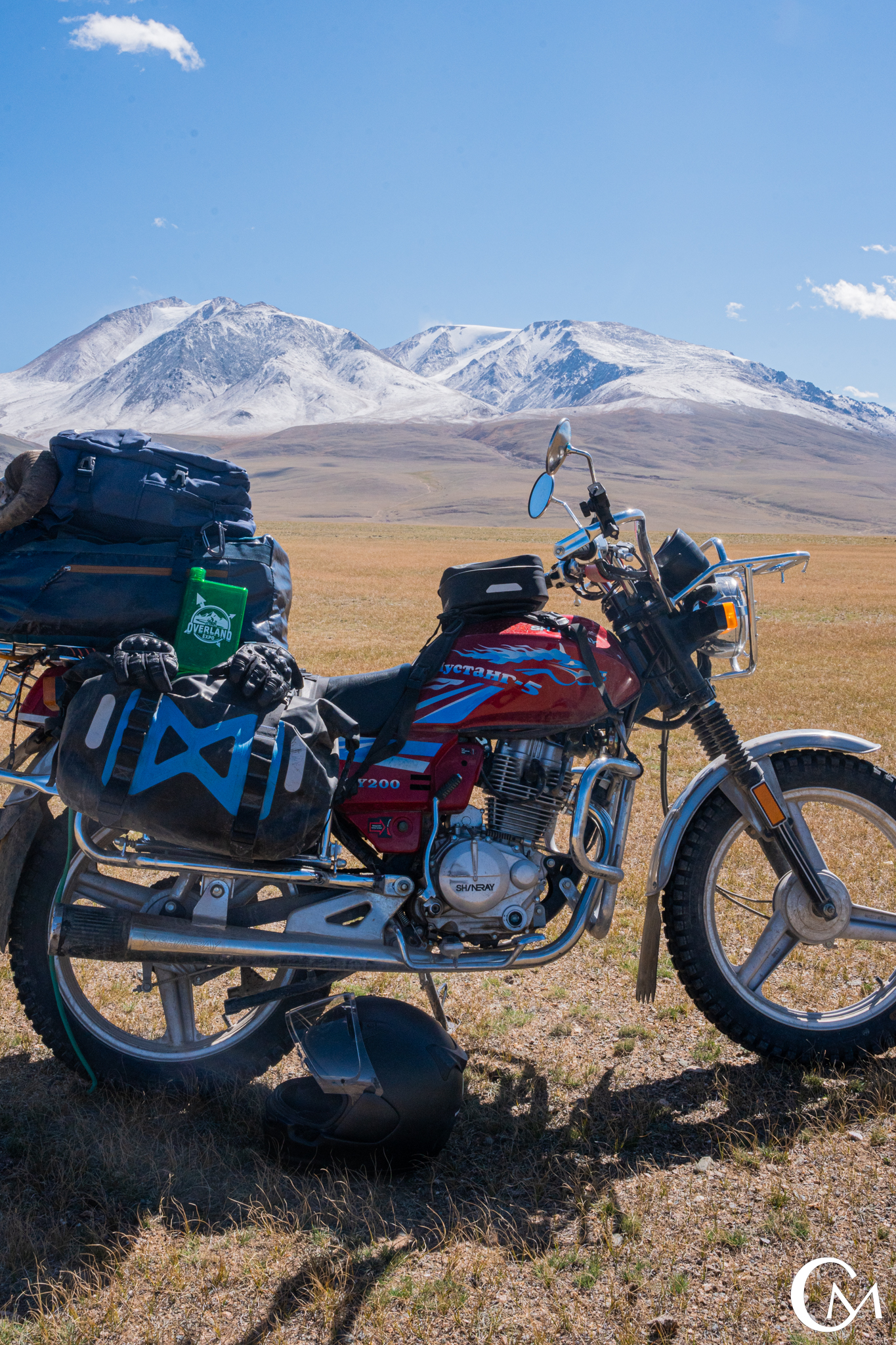Much of the U.S. and Canada is in the grip of an Arctic blast, and it’s a good excuse to try out some cold weather gear or even head out for the quiet and beauty of some snow camping at a favorite spot. For the Transglobal Car Expedition, the wave of winter storms has been a warm-up of sorts as they begin an expected 17-month-long polar circumnavigation of our planet behind the wheels of some epic overlanding – and over ice – custom rigs.
After three years of vehicle construction, route planning, test drives under harsh conditions, and gathering a team, the adventure is now underway. The expedition has left New York City, driven across the Eastern U.S., and has now crossed into Canada, with plans to press north toward Yellowknife, where they will transition from roadways to traversing the north polar ice cap. The team will keep in touch with the rest of the world on Instagram and other social media outlets via Starlink.
A core crew of eight adventurers, supplemented along the way by assisting team members, are looking to be the first to literally drive around the world North to South to North – including visits to both the North and South poles. The key here is that they are driving the entire distance, with the obvious exceptions of water crossings to Antarctica, Iceland, and around the Darien Gap in Central America. They will also avoid driving through the Middle East at this time for obvious reasons. But otherwise the team plans on traversing over 31,000 miles total through 44 countries, including over 9,000 miles of driving across the polar ice caps.

The vehicles the team will drive include four specially prepared rigs, including Ford Expedition SUVs customized by expedition specialists Arctic Trucks. The modifications are many and varied but include 35-inch tires, built-in air compressors, third-row seats removed, SwitchPro panels for lights and gear, power inverters, and more. The Excursions transported the team from NYC across the mainland U.S. through the teeth of an arctic storm system plastering much of the country with snow, ice, wind, and rain. They arrived on schedule at the Canadian border.
The initial U.S. leg of the journey also included an escort of Ford F-150 hybrid pickup trucks with 44-inch tires and campers. The team was hoping to use the customized F-150 hybrids as the primary vehicle, including on the ice, but practice runs made it clear that even with extensive modifications, it would not be enough to get the team to the poles. The team actually lost a truck when it broke through ice during a shakedown run. The submerged truck was recovered, and no one was hurt. However, the incident made it clear that something special was needed if the team was to successfully reach the poles.

Part of the solution is the Arctic Trucks AT44 6×6, a massively reworked Ford F-350 Super Duty fitted with six AT/Nokian 475-section 44-inch tires on 17-inch rims. The trucks carry 151 gallons of fuel internally and will tow a 5,000-liter/1,100-gallon fuel supply on a sledge behind the truck as it traverses the ice. The team estimates the AT44 can go 6,500 km on the fuel supply. The tires can be aired down to as low as two psi to surmount obstacles and achieve maximum grip. A crane attachment will be fitted to a custom front bumper for hoisting fuel tanks and other heavy gear. It will also have ground-penetrating radar installed to sniff out the safest passages. But even the AT44 6×6 does not have what it takes to drive to the actual poles. Something even more extreme is required.

For the treacherous journey to the North and South Poles, the team will use six custom-built Yemelya polar expedition rigs (above). The six-wheeled amphibious colossus is based on the engineering prowess of renowned expedition vehicle designer Vasily Elagin, who has built four Yemelayas. Two more updated units are being constructed during the expedition for use on the South Pole leg of the journey. Fortunately, he is also a primary team member on the outing. Elagin has led successful expeditions to the North Pole in the vehicles in the past.

Photo by Transglobal Car Expedition

Photo by Transglobal Car Expedition

Photo by Transglobal Car Expedition

Photo by Transglobal Car Expedition
The Yemelya is not road-legal and will only be pressed into service on the frozen expanses of the Arctic and Antarctic ice fields. Each Yemelya is powered by a 2.2-liter Toyota turbo diesel that can get the 3,600-pound rig going 50kph flat out. But top speed is far from being a key metric; the Yemelya is all about pushing through, over, and around obstacles, all while keeping the humans on board safe and comfortable. The massive 51 by 24-inch tires can be aired down to one PSI if need be, and if the Yemelya breaks through the ice, they self-right, float, and can motorboat along at a slow pace until they are hauled out of the water using a proven and practiced recovery system the team has drilled on. According to the expedition website, three people can reportedly live in the Yemelya for weeks at a time. These EarthRoamer-scale machines will cover the hazardous legs to the actual poles – and back.

The route (above) begins and ends in New York City. From NYC, the team will drive up into Canada and attempt to touch the North Pole, then descend south across Greenland. From the southern shores of the frozen continent, the team will board transports to Iceland, drive across the volcanic isle, and then set sail for Denmark. Once on the European mainland, the circuitous route moves south and east along the Mediterranean Sea until they arrive at Dubai in the UAE. From there, the teams sail around the troubled region, bound for Mombasa, Kenya, just south of Somalia. After an adventurous route south to Cape Town nearly a year from now, the team will cross the dangerous open ocean to reach Antarctica and push two new Yemelyas across the frozen frontier to the South Pole under a midnight summer sun. The southern polar crossing is expected to take two months.
Crossing the ice after reaching the South Pole, the team will again cross the ocean to Punta Arenas, Chile, to begin the drive north through the western South American countries to Central America. Once in Cartagena, Colombia, near the essentially uncrossable Darién Gap, the team will boat around the impasse to Panama. From there, it’s a drive north through Central America to Mexico and then the U.S. Once back in the States in 2025, the team will go West to California, then drive East back across the country to New York City to complete the journey.
The entire expedition is expected to take 17 months in total. It has never been done before. We wish the Transglobal Car Expedition the best of luck on their journey.


